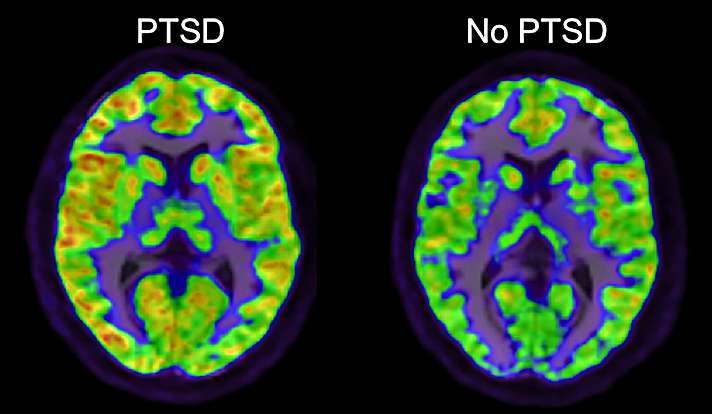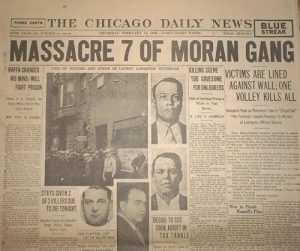Winner of the Fall 2018 StMU History Media Award for
Best Article in the Category of “Military History”
Best Article in the Category of “Science & Technology”
Charles Meyers, a Medical Officer, introduced the term “Shell Shock” to explain symptoms of Post Traumatic Stress Disorder (PTSD) displayed by military after combat in World War I (WWI). Soldiers often experienced symptoms including fatigue, tremor, confusion, nightmares, impaired sight, and impaired hearing. Meyers assumed that these symptoms were caused by the soldiers’ exposure to exploding shells, not necessarily the trauma they were witnessing or going through. In these years, symptoms of widespread PTSD were considered “weak” traits for soldiers by their colleagues and bosses. Even society as a whole started to view these symptoms negatively, which led to the destruction of their relationships after the Shell Shocked soldiers arrived home.1
Military gave Shell Shock victims no sympathy. When soldiers were dismissed from their duties, they were given labels such as “cowardice” or “emotionally weak.” These labels led to soldiers being targeted for abuse from their own side, as well as mock trials in which they were convicted. The pardons they received weren’t honorable, so they were often ashamed of their disorder, which led to more mental issues among the soldiers like depression, anxiety, and even suicide.2

New treatments flipped understandings of how World War I caused drastic changes in the behaviors of these men. Treatment for Shell Shocked victims before Arthur Hurst’s “miracle treatments” were very harsh, as they were often treated with Electroconvulsive Therapy, emotional deprivation, shaming, and solitary confinement. Some of the lesser treatments were hypnosis, massage, rest, and dietary treatments.3
Arthur Hurst primarily used occupational therapy to treat Shell Shocked patients, treating them as humanely and sympathetically as possible. This dignified care allowed for the increased numbers of “saved” soldiers, as they found ways to overcome the abuse and the labels given to them after their dishonorable discharges. Hurst’s treatments became iconic after the Newton Abbott’s Seale Hayne in Devon. Hurst’s approach allowed for 90% of Shell Shocked soldiers to be cured after only a single session.4

Modern day treatments, consist of therapy, as well as new medicines that aid in the control of the symptoms. According to Michael James, a pharmacist, there are Selective Serotonin Reuptake Inhibitors (SSRIs) that block the re-uptake of serotonin in the brain and help with sleep disorders, nightmares, and decreases intrusive thoughts. James also informed me that Serotonin Norepinephrine Reuptake Inhibitors (SNRIs) block the re-uptake of serotonin and norepinephrine in the brain which also decrease intrusive thoughts and provide aid for sleep disorders and nightmares.5
Hurst’s approach led to a change of heart and a consensus to the overall approach by society as a whole. Now, Veterans Affairs, also known as the VA, has a large program that provides aid to veterans with PTSD. However, this evolution of PTSD has not only been beneficial to veterans, but it has also allowed for a more diverse diagnosis of PTSD, in which it is more understood that other people, in addition to veterans, can also experience PTSD. PTSD can be caused from any sort of trauma including car accidents, violent crimes, and domestic violence. Individuals can even develop PTSD from having someone important abandon them as well. The DSM-5 has set a variety of symptoms for PTSD because just like any other disorder, it affects every individual differently. This document allows all individuals to gain access to the tools and help they need to recover from or live with PTSD.6

- Caroline Alexander, “The Shock of War,” Smithsonian Magazine, September 2010, https://www.smithsonianmag.com/history/the-shock-of-war-55376701/. ↵
- “Shell Shock,” BBC Inside Out, March 3, 2004, http://www.bbc.co.uk/insideout/extra/series-1/shell_shocked.shtml. ↵
- “Electroconvulsive Therapy: A History of Controversy, but Also of Help,” The Science Explorer, January 13, 2017, http://thescienceexplorer.com/brain-and-body/electroconvulsive-therapy-history-controversy-also-help; “Arthur Hurst: The Man Who Filmed Shell Shock,” BBC Radio 4, http://www.bbc.co.uk/programmes/articles/4VqPtrjsgcPKtgmYc2M5vXz/arthur-hurst-the-man-who-filmed-shell-shock. ↵
- “Arthur Hurst: The Man Who Filmed Shell Shock,” BBC Radio 4, http://www.bbc.co.uk/programmes/articles/4VqPtrjsgcPKtgmYc2M5vXz/arthur-hurst-the-man-who-filmed-shell-shock. ↵
- Email with Michael James, September 11, 2018. ↵
- Pete Walker, From Surviving to Thriving (Scotts Valley, CA: CreateSpace Independent Publishing Platform, 2013), 13-14. ↵


160 comments
Jocelyn Moreno
Wow. I’ve always known about PTSD but never did I know about the “evolution” of PTSD. It’s so crazy to know that they saw people with PTSD as “weak-minded”. It’s actually very sad to even think that. I’m so glad that people now see that it is a serious condition that is so traumatizing to many people and they are doing something to help them.
Martina Rodriguez
The author gave very good descriptions for the evolution of PTSD. I’ve always grown up in a time when PTSD was recognized as an actual medical condition not “cowardice”, so its difficult to hear about the abuse soldiers had to endure when they came home. Home is a place where they veterans should be welcomed, not belittled or even tortured. Kudos to the author for great use of photographs, they really increased the impact of the article.
John Smith
It’s horrible that soldiers and vets were ostracized by the very people that should have understood them, however, I’m sure the way they were treated was just a product of their time. Despite their struggles, at least there were some medical professionals willing to help them through their “shellshock”. Luckily today the general public does not view PTSD as such a shameful burden and mental health care is far more common and accepted than in the 50’s.
Noah Bolhuis
It is sad that veterans were treated so poorly after serving in The War to End all Wars. With the new technology, these men were put under stresses and pressures never seen before, and no one knew or thought or the side effects of these advancing technologies. This was the first war where humans were exposed to such horrors, and the technology was so primitive compared to what the American military alone uses. I can’t imagine the “Shell Shock” of soldiers in more modern times. It is quite a scary thought, especially as a person that plans to join the military after my college experience.
Diego Aguilera
Really great article to learn more about the brain and PTSD. i like the focus choice as this could be a broad topic. I enjoyed the descriptive and in depth paragraphs with the cool photos in the article. I like the comparisons made from back to World War 1 to now. I would myself do more research to see also what happens in the NFL and compare them.
Sarah Nguyen
This was a very intriguing article because the author helped me, as the reader, understand the evolution of PTSD and how to public’s view has changed on it throughout the decades. This was especially interesting to me because I did my article over the Vietnam War, and got to read many accounts of soldiers who most likely had PTSD and saw the relation of their mental health and how PTSD wasn’t officially recognized until 1980. Check out the book “Catcher In The Rye”, it was published in 1945, and I feel the main character had a type of PTSD in the book.
Jose Fernandez
I think it is sad that people got mistreated so badly if they had PTSD. I have a relative that suffers from this conditions and it is very serious. I am just glad that nowadays there are several treatments and ways to people. I really liked the article and I think this a topic worth reading and investigating. The article is well structured and well written. I really enjoyed reading it.
Madeline Torres
It was sad to read that many of our troops were basically ignored and thrown under the bus for their illness. I am glad people have finally opened their minds to the thought of PTSD and veterans who have Shell Shock. Our veterans definitely deserve the treatment they need, it would only be fair considering the fact that they risked their lives for us and risked their lives for the freedom that we have. Overall, this article was very well informed and enjoyed reading it.
Ariana Melendez
This article is very informative of the originally perception of Post-Traumatic Stress Disorders. It is sad to find out that soldiers were mistreated and shamed for their trauma; much harder to know that they were not accepted, nor understood by society. I like that this article was concise and to-the-point about the history and current development of PTSD treatments, not only for veterans but all victims.
Emily Jensen
PTSD is a serious and ever-growing problem in the United States. It is really hard to believe that the military used to label those suffering from PTSD as cowards or emotionally weak. To think that the treatment used to be electroconvulsive therapy is sickening. The Veterans Affairs contribution to aiding those with PTSD really shows how our views surrounding mental health have drastically changed, for the better, over the last century.